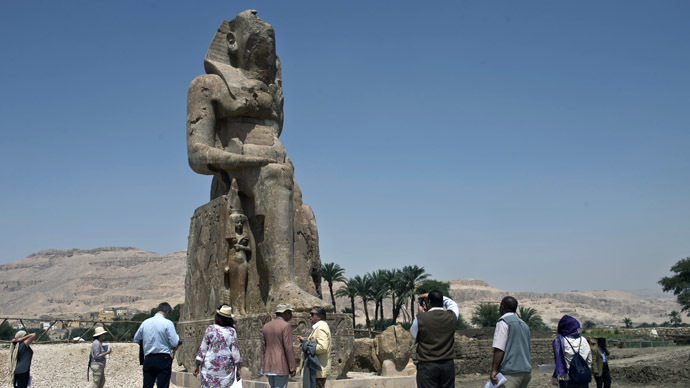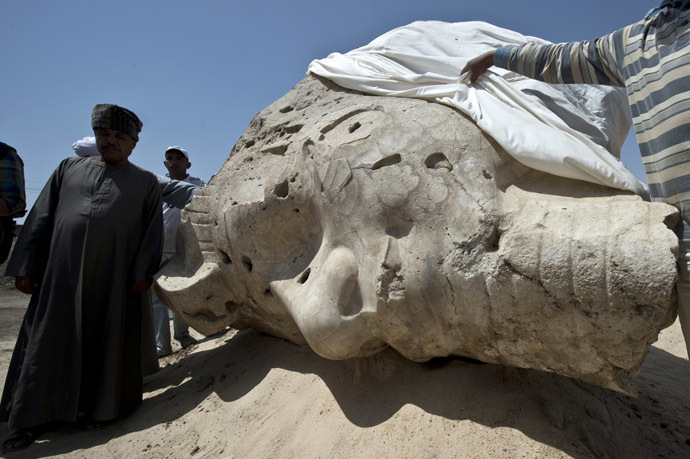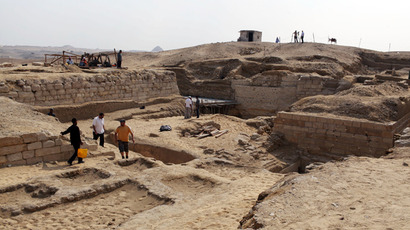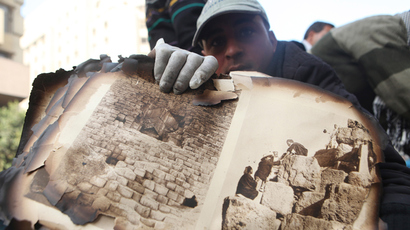Two huge pharaoh statues unveiled in Egypt

Archaeologists have revealed two massive statues of Pharaoh Amenhotep III in the famous Egyptian city of Luxor, at their original sites in the funerary temple of the king, on the west bank of the Nile.
The two colossal statues will add to an existing pair of monoliths in the temple, which is already world famous for the 3,400-year-old Memmon colossi – twin statues of Amenhotep III who ruled during the political and cultural zenith of ancient Egyptian civilization, AFP reports.
Pharaoh Amenhotep ruled over an empire that extended from the Euphrates, where modern day Iraq is located, to Sudan, and managed to maintain Egypt’s position through diplomacy. Amenhotep became king at the age of 12 and died in 1354 BC.
The new statues have been extensively restored, as they have experienced severe damage over the centuries, according to Hourig Sourouzian, the German-Armenia archaeologist who is leading the project to conserve the entire Amenhotep III temple.
“The world until now knew two Memmon colossi, but from today it will know four colossi of Amenhotep III,” Sourouzian said.
“The statues had lain in pieces for centuries in the fields, damaged by destructive forces of nature like earthquakes, and later by irrigation water, salt encroachment and vandalism,” she added.

One of the new statues is of the pharaoh seated; it weighs 250 tons and is 11.5 meters tall and 3.6 meters wide. It is now missing its double crown, which would have made it 13.5 meters high and 450 tons in weight.
The seated Amenhotep III is wearing a royal pleated kilt and a zigzag decorated belt. Beside his right leg rests the figure of his wife in a wig and a long fitting dress. However, the statue of queen mother Mutemwya, which should be by his left leg, is missing, the archaeologists said. The throne that the pharaoh is sitting on is decorated with scenes showing the unification of Lower and Upper Egypt.
The second statue, of Amenhotep standing, has been positioned at the north gate of the temple.
The archaeologists are also exhibiting several other ancient pieces of smaller, fragmented statues of the pharaoh and his relatives, including an extremely rare alabaster head of Amenhotep III. Next to the head is a statue of Princess Iset, his daughter.

Sourouzian said that her team is trying to conserve all these monuments and the temple itself, which had been left to the mercy of the elements and suffered at the hands of man.
“Every ruin, every monument has its right to be treated decently. The idea is to stop the dismantling of monuments and keep them at their sites,” she said.
She added that the work to preserve the Amenhotep temple is being funded entirely though private and international donations and that the only way to make sure they can complete their work is through steady international funding.
Luxor is a city of 500,000 on the banks of the Nile in southern Egypt, and is now an open air museum of pharaonic tombs and temples. With the exception of the colossi, very little today remains of Amenhotep’s temple because of its location on the Nile floodplain; successive floods have eaten away at the foundations.














